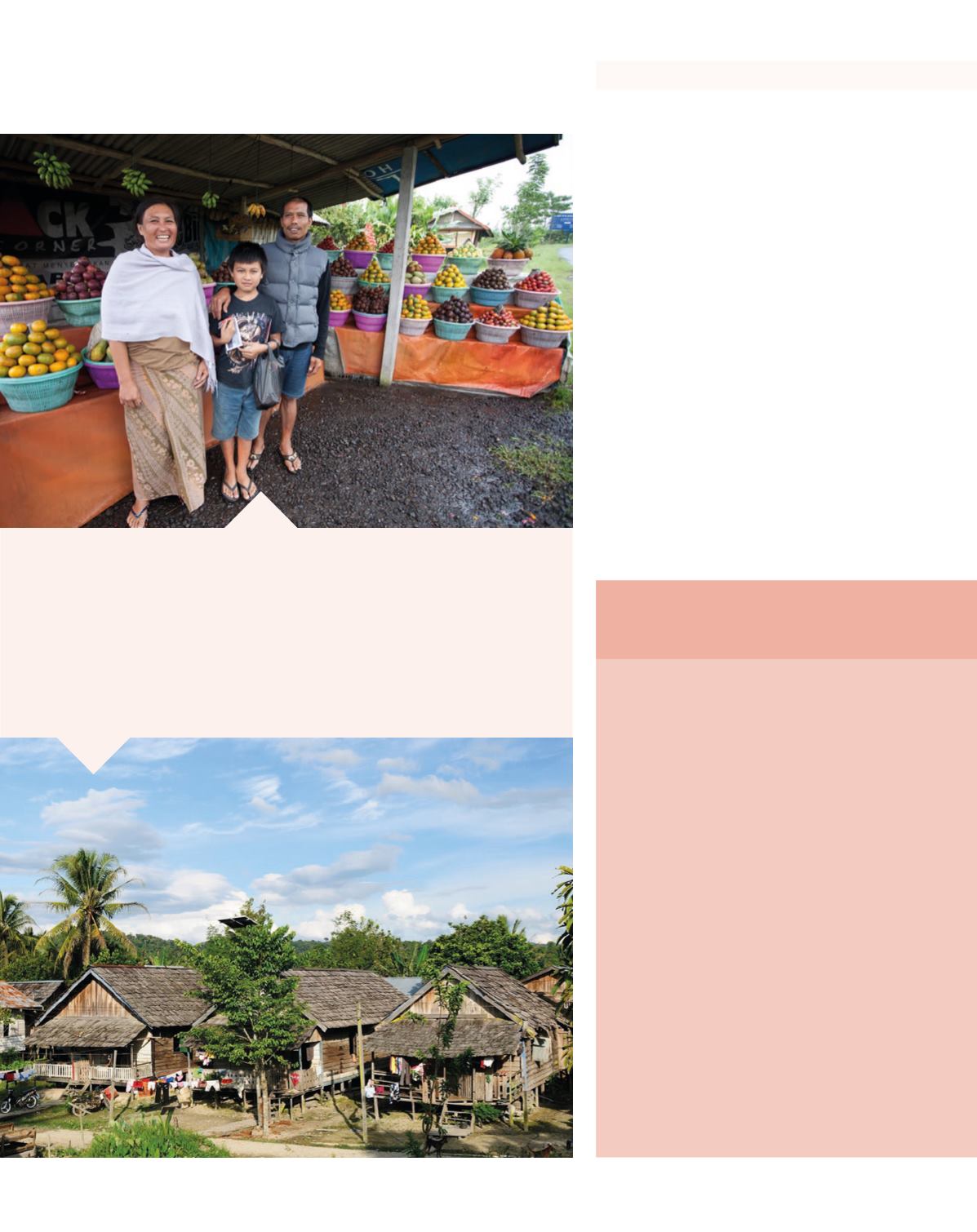
15
CHAPTER 2: POPULATION
VILLAGE CHANGES
Some Indonesians live in traditional villages
that have changed little for generations.
In Kalimantan, some Dayak people still
work in agriculture and live in traditional
longhouses that contain many families’
sleeping spaces with communal areas.
Others live in modern, private village houses
built for single families. Some Indonesians
undergo circular migration between village
and town life. For example, people in Java
may live and work in cities for periods of
up to six months and send money home to
families or relatives. They return home to
live and to work for shorter periods during
farm harvest periods.
AVERAGE AGE: 28.5
POPULATION GROWTH
RATE: 1 percent
BIRTH RATE PER 1,000
PEOPLE: 18
AVERAGE NUMBER OF
CHILDREN PER MOTHER: 2
INFANT DEATH RATE PER
1,000 BIRTHS: 27
LIFE EXPECTANCY: 71
POPULATION
STATISTICS
The size of families in Indonesia is
decreasing. One or two children per
family has become the norm.
These traditional village
houses in Borneo are
built on stilts to avoid
flooding when river levels
rise after rains.


